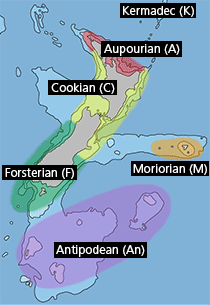Compare Pseudechinus albocinctus
| toggle to add to compare list |
Taxonomy
Phylum: Echinodermata This is not a Mollusc. Other non-Molluscan Phyla (Echinodermata, Brachiopoda etc) have been included to help identify species that may be mistaken for Mollusca, but are not. Family: TEMNOPLEURIDAE Full Classification: Echinodermata (Phylum) > Echinozoa (Subphylum) > Echinoidea (Class) > Euechinoidea (Subclass) > Camarodonta (Order) > Temnopleuridae (Family) > Pseudechinus (Genus) > albocinctus (Species) |
Images: Pseudechinus albocinctus (Hutton, 1872)
No images yet of this species.
If you have good photos you would like to share, please email me, and I can add them here.
If you have good photos you would like to share, please email me, and I can add them here.
Taxonomy
Phylum: Echinodermata This is not a Mollusc. Other non-Molluscan Phyla (Echinodermata, Brachiopoda etc) have been included to help identify species that may be mistaken for Mollusca, but are not. Family: TEMNOPLEURIDAE Full Classification: Echinodermata (Phylum) > Echinozoa (Subphylum) > Echinoidea (Class) > Euechinoidea (Subclass) > Camarodonta (Order) > Temnopleuridae (Family) > Pseudechinus (Genus) > albocinctus (Species) |
Details: Pseudechinus albocinctus (Hutton, 1872)
Size/Grows to:
50mm
Distribution:
Southern North Island, Cook Strait and South Island, from 5-145 metres
Geographical Range:
CFE.
Notes:
Species Links
Distribution Map
References and Publications
- Mills, S., Neill, K., Anderson, O., Davey, N. 2017 Extraordinary Echinoderms. A guide to the echinoderms of New Zealand. Version 2, Niwa Guides (p.52)
Key to Geographical Ranges

The symbols K.A.C.F.M.An. are used to indicate the geographical range of the species.
They have been adopted to give an approximation of the range of each species within New Zealand.
K=
Kermadec Islands
A=
Aupourian - Kaipara Harbour, north around North Cape, encompassing the Three Kings Islands and south to East Cape
C=
Cookian - Lower North Island and the northern part of the South Island
F=
Forsterian - Otago, Fiordland and Stewart Island
M=
Moriorian - Chatham Islands, Pitt Island
An=
Antipodean - Subantarctic Islands of New Zealand
Fw =
Freshwater
L =
Land
N =
North Island
S =
South Island
E =
Endemic
I =
Introduced
R =
Recent
Sf =
Subfossil
Fo =
Fossil
Recently Viewed
